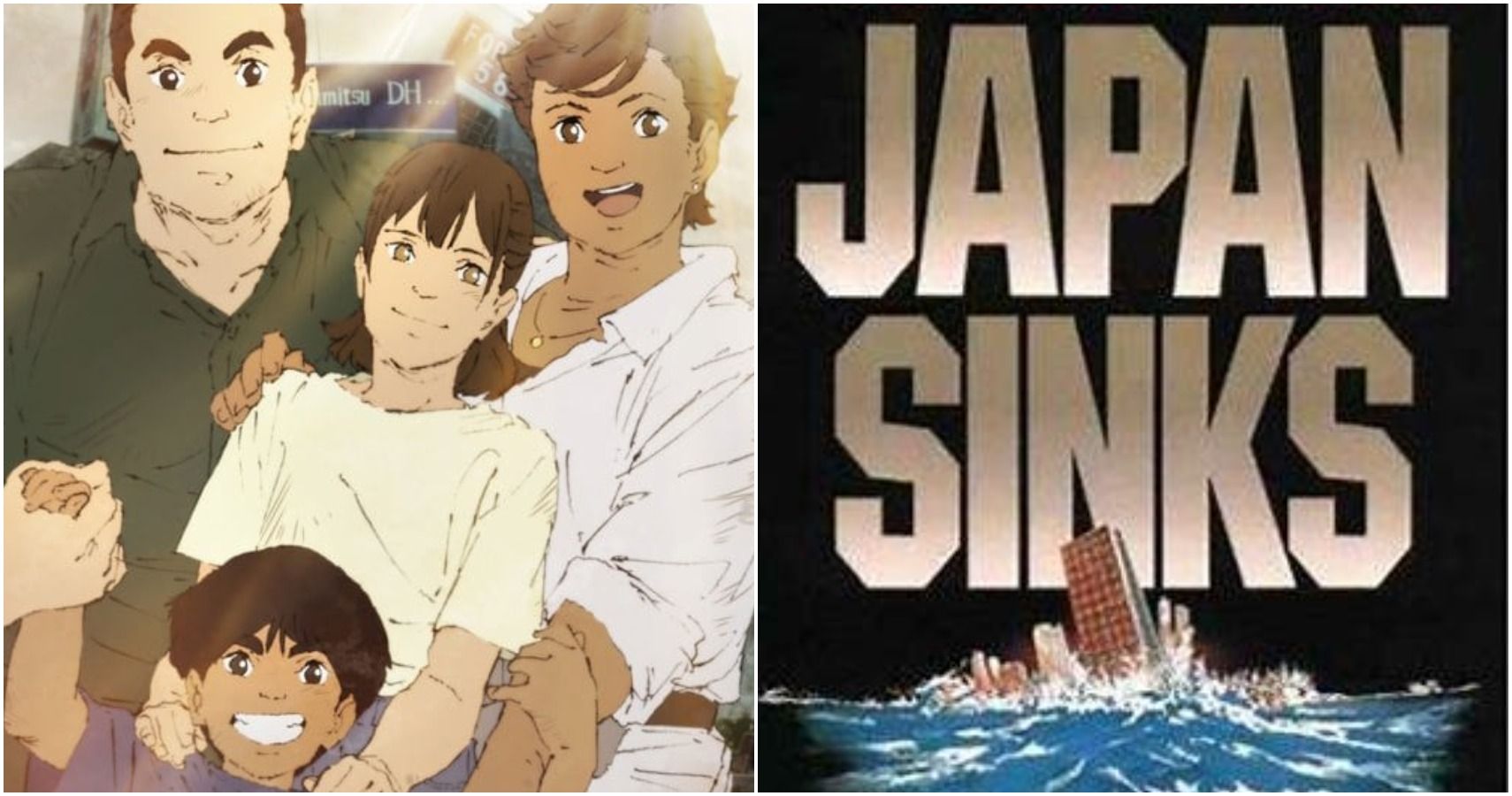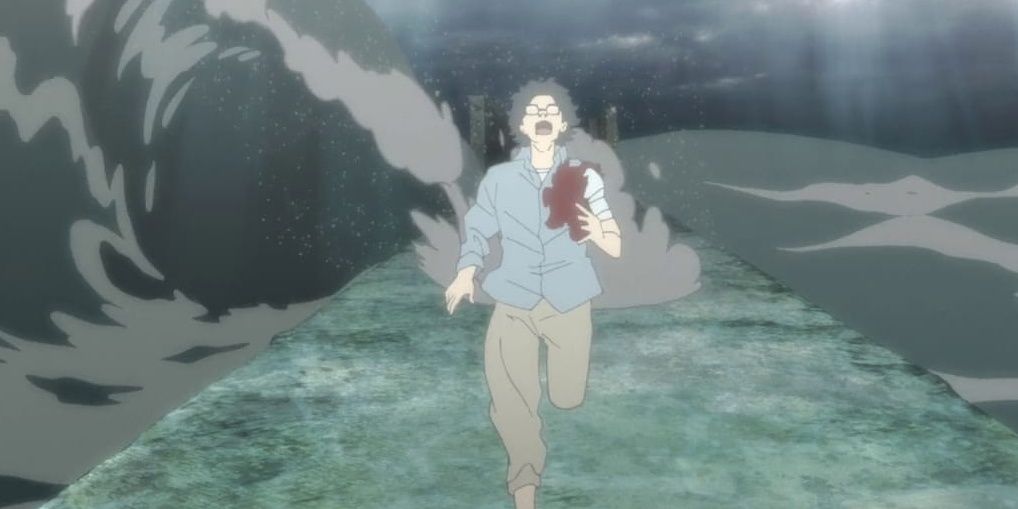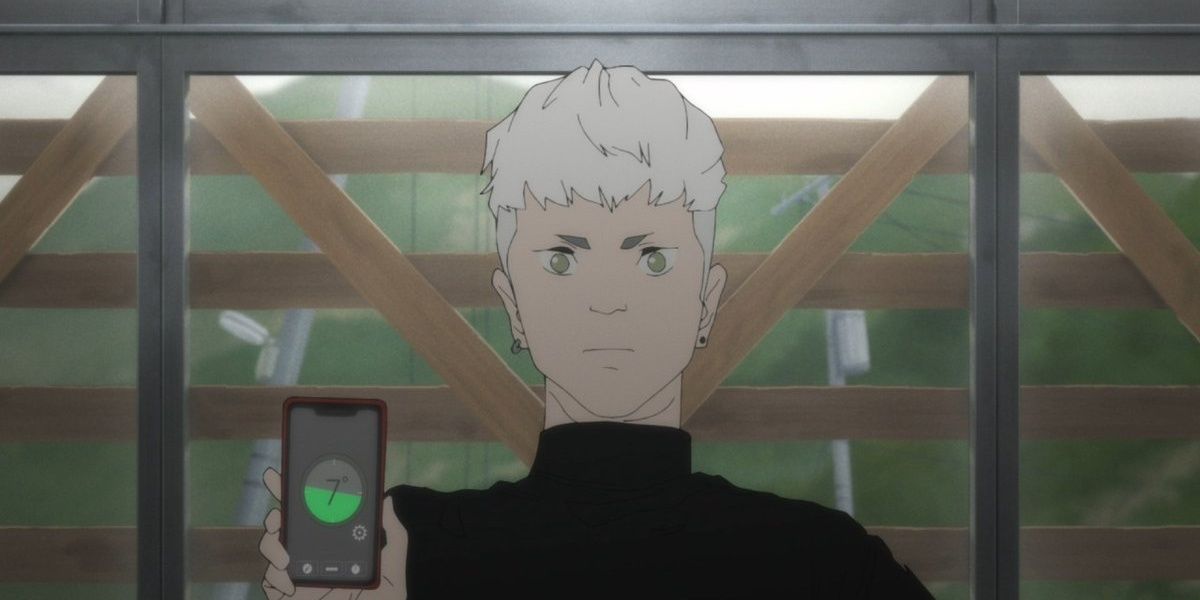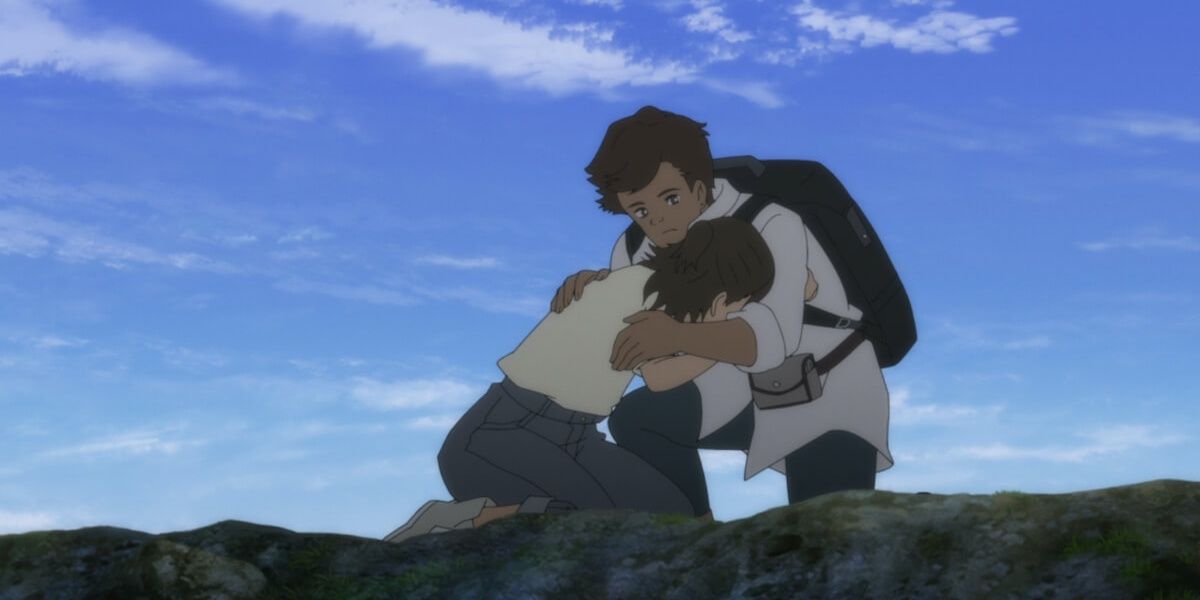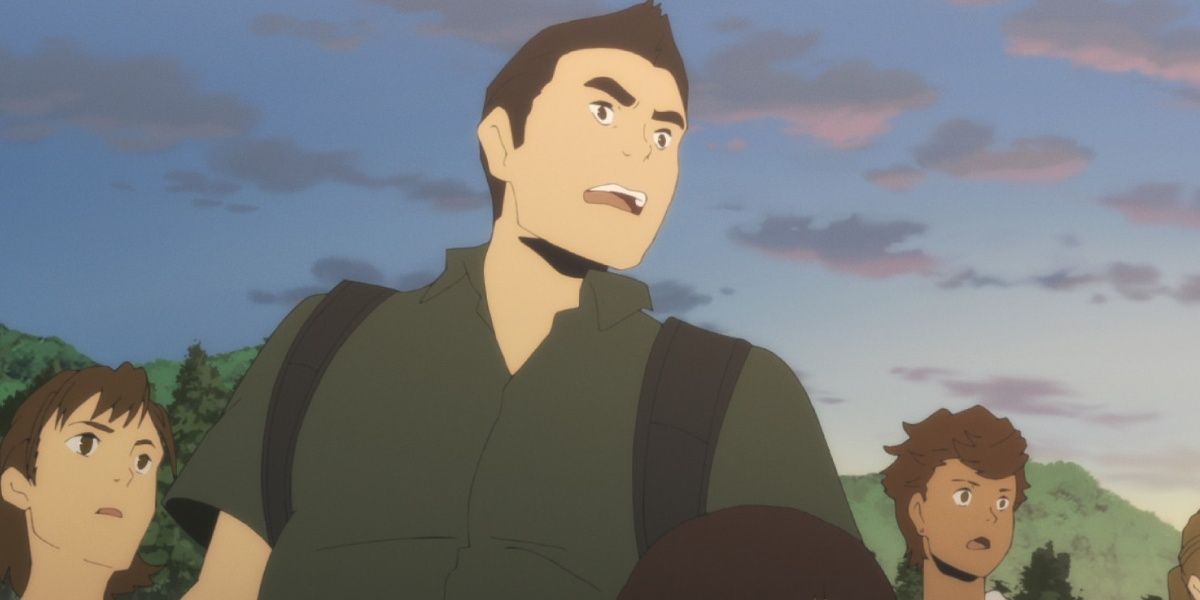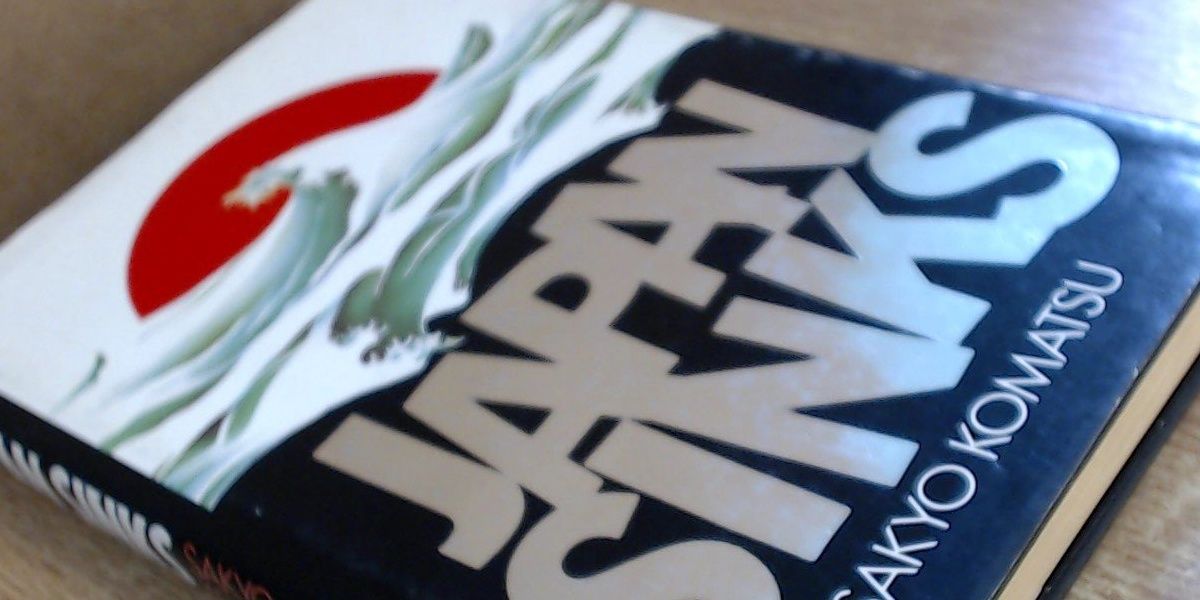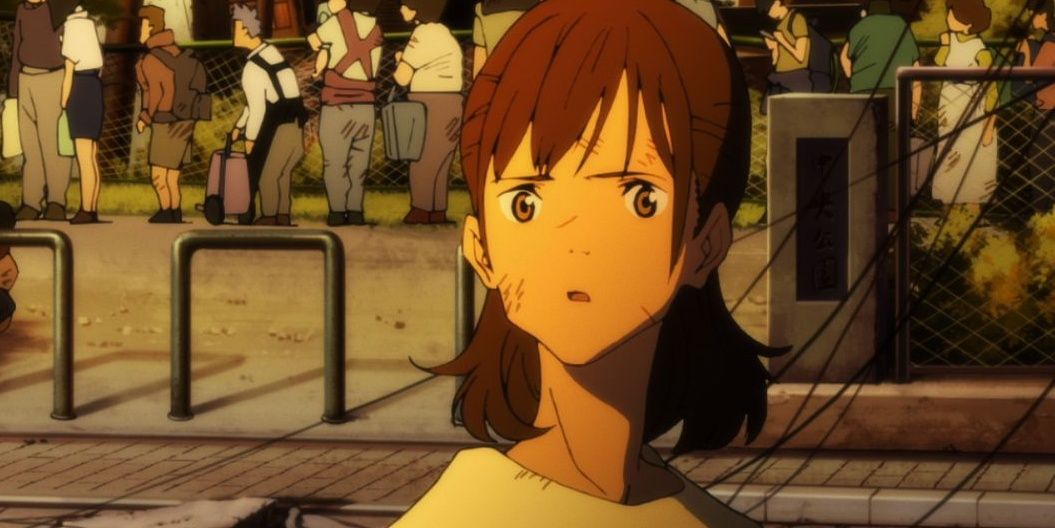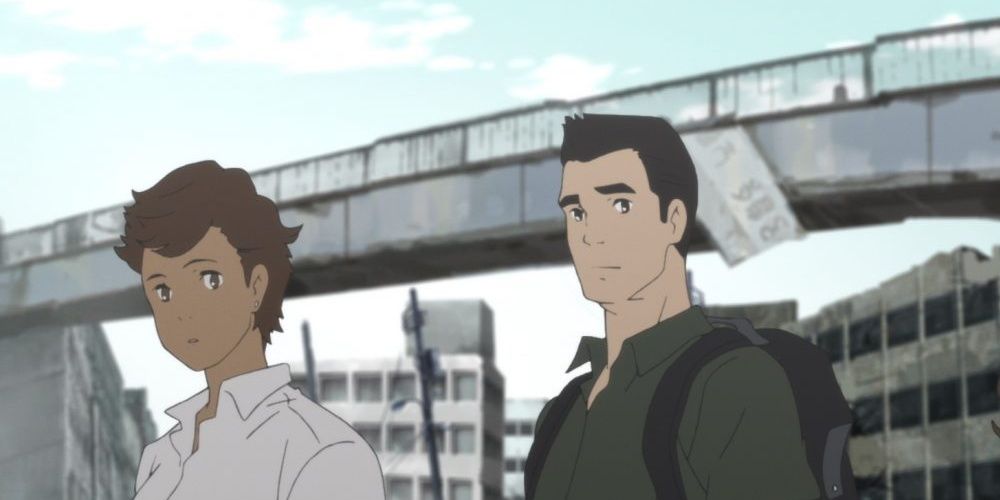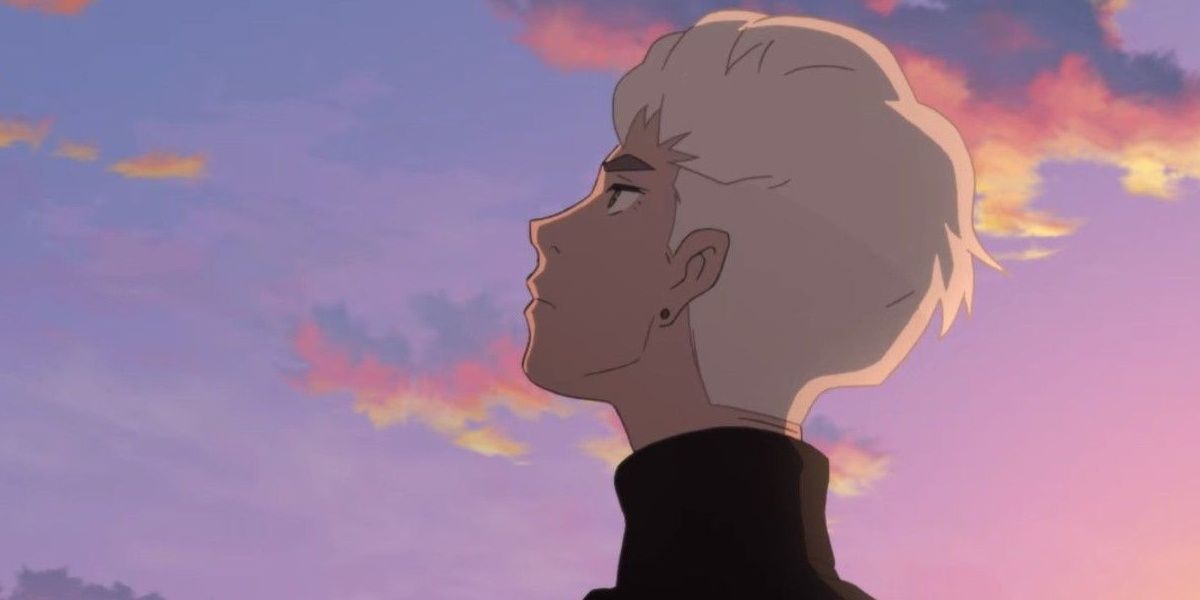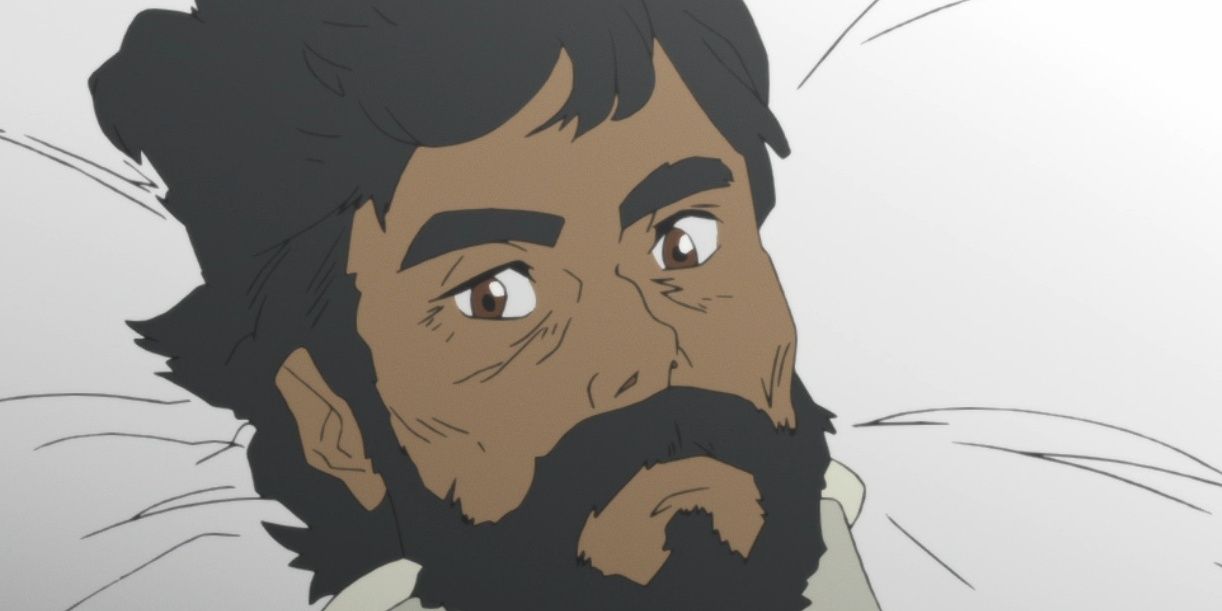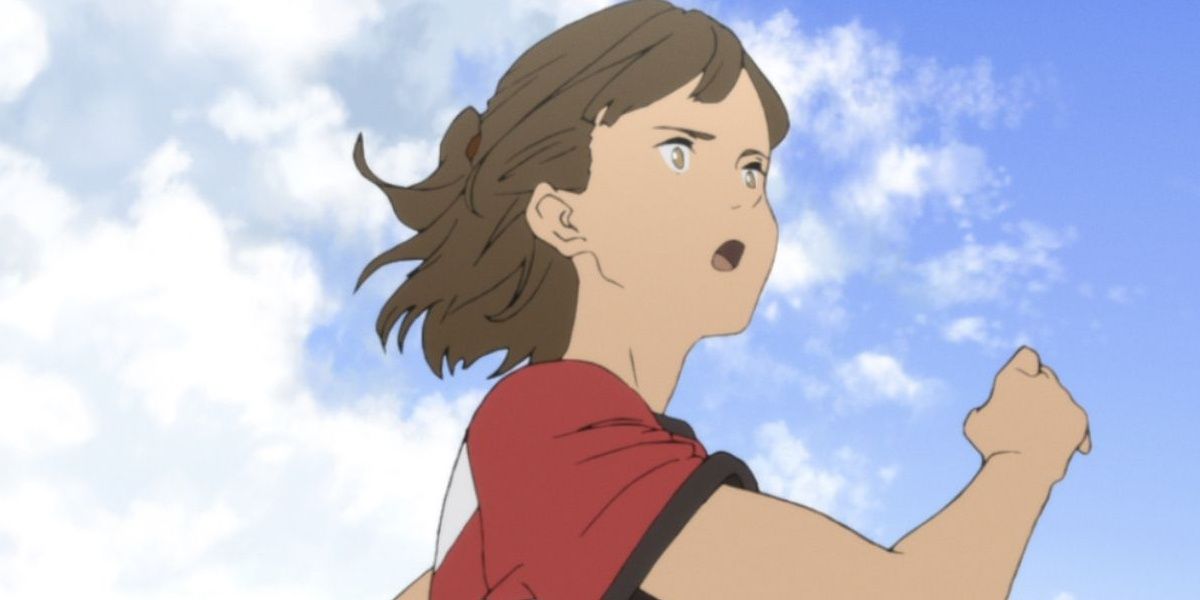Released this month, Netflix’s Japan Sinks: 2020 isn’t exactly an adaptation of its source material, but more of a homage that explores its themes from a different angle, and from different perspectives. The 1973 novel – Japan Sinks – has already been adapted for the big screen twice, so that story didn’t need to be told again anyway. It was a wise choice to update and expand on the novel, but this new series renders it almost unrecognizable.
However, while the anime is superficially different to the novel, there are nuances and ideas that echo through both. Let’s have a look at both of them, to see exactly how much Komatsu’s novel influenced the series from Science Saru.
10 STAYED THE SAME: Japan Does Sink
Let’s get the obvious one out of the way. Both the book and series focus on what would happen if there were, to quote a fictional scientist, “a vast alteration of the earth crust of the Japan Archipelago.” Long story short, Japan really sinks.
The theoretical science behind the disaster is the same in the book and series, and the same events occur. It begins with small tremors, before a major one. Smaller islands sink first, poisonous ash-rain falls from the sky, and characters notice the ground getting lower. Also, both feature the unforgettable and terrifying image of Mt. Fuji erupting.
9 CHANGED: The Modern Context
There’s a pretty obvious hint that the showrunners updated the original story in the title of the series, so this is not exactly a surprise. However, while the modern-day setting isn’t the biggest departure from the book, it’s the most effective of the two.
In Japan Sinks: 2020, characters regularly check their social media feeds to get information, as scientists and politicians tweet updates. It's also worth noting that one of the protagonists is a YouTuber. The book, meanwhile, is a look back into a specific point in Japanese history that's not exactly applicable today. If you think about it, the Netflix series is a mirror held up to the past few months in the real world, which makes the whole experience all the more chilling.
8 STAYED THE SAME: The Uncompromising Brutality
Like a lot of disaster stories, Japan Sinks doesn’t hold back in describing the devastating impact of its catastrophes. Take this passage: “Of the vast crowds gathered among the Kamo River, many were hurled in tangled masses from the bridges and from the houses…”
The Netflix series stays loyal to the harshness of the book. Actually, you could say that it goes even further. Characters that viewers have grown to love die without warning, and not always from the effects of the surrounding natural disasters. There are more things at stake for the characters in the series, which brings us to the next subject:
7 CHANGED: The Story's Perspective
The perspective is where the stories diverge the most, in that they effectively tell different stories altogether. Similarly, fans of World War Z will be aware that the film tells a story that exists in the same world as the book, but that’s about it when it comes to commonalities. It’s the same sort of thing with Japan Sinks: 2020.
While the series focuses on regular folk (namely the Mutou family), the novel explores the world of the scientists and corrupt politicians who are either struggling or failing to handle the coming disaster. Despite this different perspective, the core messages and ideas seep through both stories.
6 STAYED THE SAME: The Political Themes
In the book, the Japanese prime minister gets his whole family to safety, sipping his cognac in office as Japan crumbles. Two investors worry about the effect it’ll have on their profits, and scientists want to hide their research from the rest of the world. The novel has frequently been cited as a time capsule of the politic scene of '70s-era Japan, and it’s easy to see why.
While the series doesn’t examine politics at this level, the social commentary is still present. This is most evident in how some characters voice explicitly anti-immigrant views, particularly in one scene where some nationalists only want to rescue citizens of pure Japanese descent. It should be noted that their barge sank a few minutes later.
5 CHANGED: There Are More Prominent Female Characters
The book is pretty sparse on women; there are one or two wives here and there, and the occasional waitress. To be fair, the female characters in the book aren’t two-dimensional stereotypes, but they’re rarely there and have little impact on the plot.
This might have been a factor in updating the story to 2020. The series doesn’t just feature strong and well-drawn female protagonists, but heroic women and girls from start to finish.
4 STAYED THE SAME: Dealing With Grief & Loss
In the novel, Onodera mourns family and loved ones as he traverses the country with his team. There is an especially sad scene towards the end, in which our grieving protagonist almost loses hope. Japan Sinks: 2020 retains this, but, like the brutality mentioned above, it sharpens the melancholy edge even more so.
We expect death in a disaster story. In a twisted way we'd probably feel cheated if there were no casualties. But both the series and book really tug on the heartstrings here. No spoilers, but don't get too attached to anyone.
3 CHANGED: The Genre
It's ingenious how two entirely different genres could come out of the same event, but it's been done before. Think about how Marvel's TV series compare to the films: The former are slow-burning, character-driven dramas for adults (Daredevil, Jessica Jones, etc.) while the latter are child-friendly action flicks (Spider-Man, Ant-Man, etc.). And yet, they share the same universe and often refer to one another.
Japan Sinks has done the same sort of thing. The novel would come under the political intrigue genre, while the series is a story of survival that shares more in common with a blockbuster disaster movie. There's an underlying conspiracy that the characters discover over the course of the series, but it's not the focus of their story.
2 STAYED THE SAME: Onodera Plays An Important Role
In a nod to the book, the series incorporated the novel’s protagonist in the strangest way. In the novel, Onodera is a scientist and submarine pilot who makes the important discoveries, and he futilely tries to convince the politicians to listen.
In the series he's the same character with the same credentials, but now he's a paralyzed old man who can only communicate through Morse code. Not only that, but he's not the protagonist of the series; he's a supporting cast member who helps the Mutou family by providing some important information. It’s kind of odd, but Onodera is still a vital part in the events of the plot – which turns out differently.
1 CHANGED: The Ending Is More Optimistic
Spoiler alert here, for the book and series. The book ends on a pretty miserable note: Onodera realizes Japan has indeed sunk, as he is carried away, injured, on a Siberian train. The series, meanwhile, ends on an optimistic note. After all the tragedy and loss, audiences learn that Japan will eventually rise again.
There’s an epilogue set eight years later, in which the surviving characters are shown getting on with their lives, rebuilding, and fulfilling their dreams against all odds. Onodera, along with the YouTuber Kite, is helping to rebuild Japan and preserve the memories of the old nation. Meanwhile, the surviving Mutou siblings fulfilled their dreams of becoming athletes (Ayumu is a Paralympic runner and Go is a pro-gamer). To look at it one way, the series gave Onodera the chance to accomplish what he failed in the novel. How touching.

